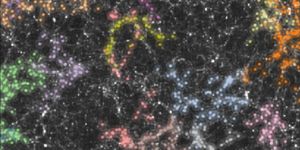Navigating by foot uses unique brain region
A National Eye Institute (NEI) study found that a unique region of the brain’s cortex is involved when relying on vision to guide foot navigation. The researchers also found that other movements, like crawling, do not activate the occipital place area (OPA). The finding may shed light on childhood developmental milestones as kids learn to interact with their environments.
The OPA and the retrosplenial complex (RSC) are the two main areas of the cortex activated during foot navigation. The research team believes that each of these areas supports a different kind of navigation: the RSC supports map-based navigation or finding our way from one specific place like home to a distant place like a bus station or store. OPA supports visually guided navigation, which helps us avoid boundaries and obstacles.
Navigating through any physical environment involves cognitive processes of several classes of information. Each information class is processed in its region of the brain’s cortex, and then they work together to support navigation behavior such as walking. Loss of any of these regions can affect how or whether someone can successfully navigate.
Most adults and older children navigate environments by walking, but we retain the ability to crawl from infancy. The researchers hypothesized that if OPA matured slowly, then it should be activated by both modes of movement.
The research team examined whether the OPA would activate in adults when crawling. They recorded videos from the perspective of someone walking through an environment and someone crawling through that same environment. In addition, they made a video collage of these random shots and filmed from above to simulate flying-over-the-environment movement.
The team used functional magnetic resonance imaging (fMRI) to monitor the activation of brain regions in 15 adult study participants as they were viewing each video. When the participants viewed the walking video, the brain region corresponding to the OPA was activated. However, OPA was not activated when they viewed the other videos (crawling, flying, or scrambled views). The RSC was activated when viewing all the videos. The findings suggest that only OPA is specific for walking, as opposed to other modes of visual navigation. Several other brain areas were activated when the participants viewed the crawling videos, so the researchers believe additional regions may be involved in navigation early in life.
Sources: Cerebral Cortex, Eureka News Alert, National Institutes of Health








